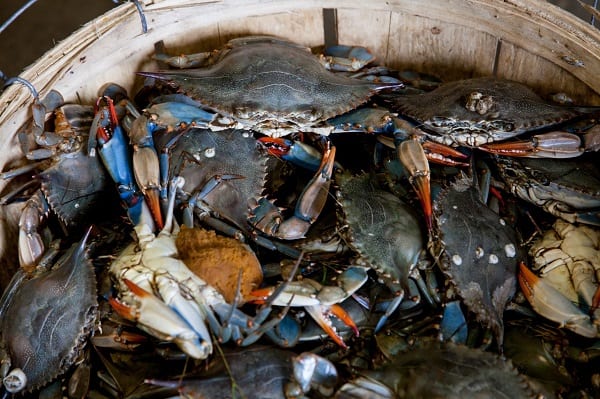ANNAPOLIS, MD – The annual Blue Crab Advisory Report, released Tuesday by the Chesapeake Bay Program and developed by the Chesapeake Bay Stock Assessment Committee, finds that the overall Chesapeake Bay blue crab population is not depleted and is not being over-fished. The blue crab population in the bay increased nearly 60 percent from 372 million in 2018 to 594 million in 2019, according to the report.
The report provides scientific analysis of the Chesapeake Bay’s blue crab population that helps resource managers set blue crab fishing regulations. The Chesapeake Bay Program’s Sustainable Fisheries Goal Implementation Team recently approved the 2019 report. It includes expert analysis of data from the annual bay-wide Winter Dredge Survey (released earlier this year by the Maryland Department of Natural Resources and Virginia Institute of Marine Science, as previewed by Governor Larry Hogan) and harvest estimates from recent years.
To ensure continued resiliency of the population, resource managers focus on maintaining a robust stock of female crabs. The population estimate of adult females increased to 191 million in 2019 from 147 million in 2018. This number is above 70 million, which officials said is considered to be the minimum acceptable level for female blue crabs in the bay, but lower than the target of 215 million.
In the 2018 blue crab fishing season, 23 percent of all female crabs were harvested – safely below the target (25.5 percent) and threshold (34 percent) levels for the 11th consecutive year, according to the report.
The juvenile blue crab population – crabs that will grow to harvestable size this fall – was estimated to be 323 million, above the long-term average of 224 million. The number of crabs that die in-between fall and spring – the overwintering mortality – was lower this year at 1.8 percent, due to the warmer 2018-19 winter. This is a decrease from the 6.37 percent observed in the winter of 2017-18.
The 2019 Advisory Report recommends:
- Jurisdictions should maintain a risk-averse approach; no adjustments to management are warranted.
- Jurisdictions should implement ways to more accurately track commercial and recreational harvest.
In response to the report, Lisa Feldt, vice president for environmental protection and restoration of the nonprofit Chesapeake Bay Foundation, issued the following statement:
While the bay’s crab population can fluctuate, this year’s results are a demonstration that the risk-averse, scientific management programs in place are working. Improved habitat and clean water are essential for a healthy crab population. Continuing to implement the Chesapeake Clean Water Blueprint will help make that happen. That’s good news for those who catch crabs as well as those who enjoy eating them.
The Blue Crab Advisory Report is developed by the Chesapeake Bay Stock Assessment Committee, a group of experts from state and federal agencies and academic institutions.
The blue crab fishery in the Chesapeake Bay is managed by the Maryland Department of Natural Resources, Virginia Marine Resources Commission, and Potomac River Fisheries Commission.
Do you value local journalism? Support NottinghamMD.com today.

